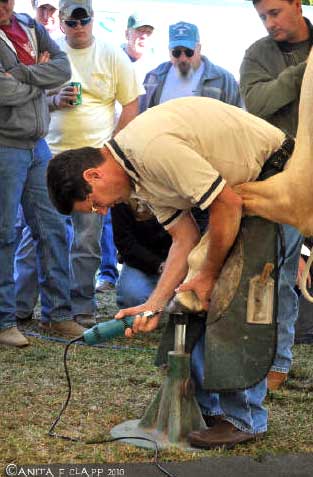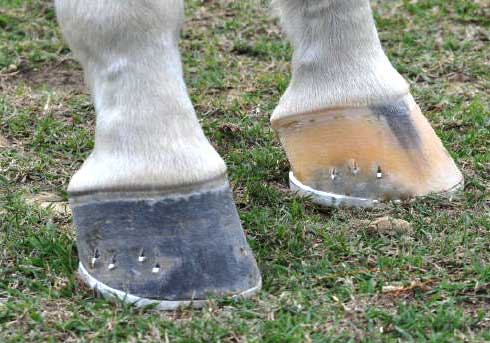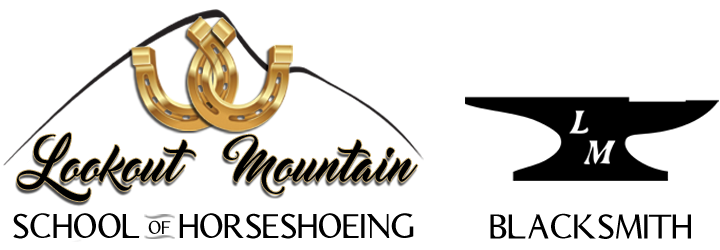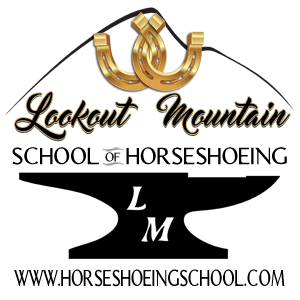Course Description
 We have three methods of teaching at the school: The classroom, which teaches you what to do. The Forge area and field training gives you the opportunity to practice what you’ve learned in the classroom. All work done in the forge room and in the field in supervised by Tom and Lane.
We have three methods of teaching at the school: The classroom, which teaches you what to do. The Forge area and field training gives you the opportunity to practice what you’ve learned in the classroom. All work done in the forge room and in the field in supervised by Tom and Lane.Our forge room is 24’ x 40’ with eleven forges that will provide each student wuth an individual forge, workbench, vise, coal bin, anvil and all of the tools need in order to learn to trim and shoe horses and form different types of corrective shoes. In the forge shop, the students build the tools they need to use. We have completely equipped mobile units when working in the field. However, the student does all work. The student will also begin normal trimming during the first week. We do not use “dead feet” here at the school. We feel that an important part of becoming a farrier involves the handling of horses. “Dead feet” cannot provide the experience needed to become a qualified farrier. A qualified farrier not only knows what to do, but must be able to DO what they know.
The first week of class includes lectures in the mornings and forge work in the afternoon. The lectures cover:
- Introduction and Safety
- Horse Conformation
- Anatomy of the Foot and Leg
There are forty to fifty different types of shoes used (both hand made and keg shoes). We concentrate on shoeing the type of horses which provide the most business and income including racing, barrel, cutting, jumping, equitation, pleasure and saddle horses.
In addition to conformation, anatomy, corrective and pathological shoeing the school also teaches ways of getting first time and repeat business, setting up a mobile shop as well as maintaining financial records for tax purposes. In short you will learn how to handle your horse, your customer and your business. At the end of the eight weeks you should know how the horse travels, what makes him travel the way he does and if necessary how to alter his gait.
Diplomas are earned at the school. The quality of our school is reflected by each students work. Each student upon graduation will have received the instruction and practicum necessary in order to return home ready to setup business from flat shoeing to corrective shoeing, how to operate your own business and ways of promoting that business.
 Veterinarians
Veterinarians
We have several fine veterinarians in the area with whom we work closely.Dormitory and Facilities
Our dormitory is a modern home with 1500 sq. ft. of living space. It provides for 16 male students and four female students. It has everything you need with all the modern conveniences for your personal comfort. There is no housing fee. Meals can be prepared in the full kitchen facility.Top right: Special guest, Ian McKinlay shown repairs a moderate to sever hoof crack while students look on.





